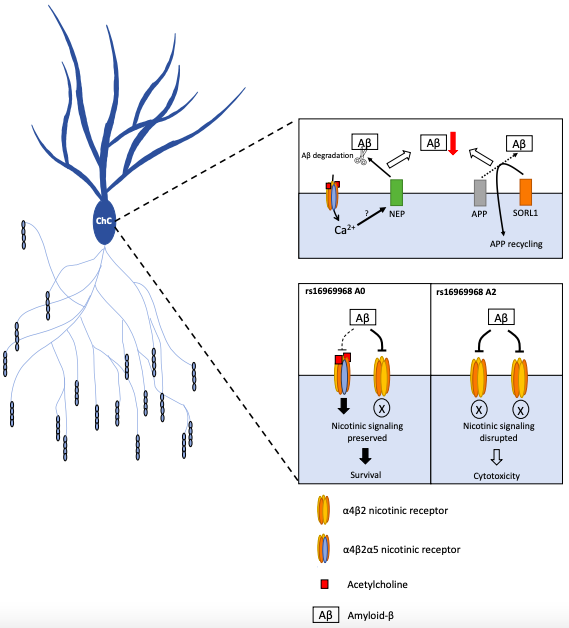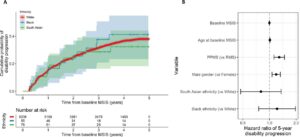
Jonas Rybnicek, et al. – University of Toronto.
This study makes significant progress in uncovering why variations in CHRNA5, which encodes the α5 nicotinic receptor subunit, have an impact on AD pathology. The authors find CHRNA5 expression in PFC is largely limited to chandelier cells, inhibitory neurons that express many other amyloid-interacting genes. Furthermore, they find a direct relationship between genotypes affecting receptor trafficking and chandelier cell number, as well as an inverse relationship with cortical amyloid load, suggesting a neuroprotective effect of α5-containing receptors.





